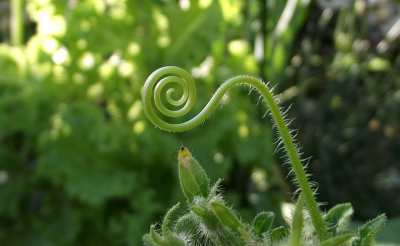
Do you have a vegetable garden at home? If you observe a bitter gourd or pumpkin plant, you will notice slender thread-like structures that wrap themselves tightly around a support. Most climbing plants have this feature called tendrils. The purpose of tendrils is to guide a climber to a support to which it can cling.
Tendrils help plants to change their position. When tendrils come in contact with support, there is faster growth for cells in the opposite side. As a result, the tendril rapidly forms a coil around the support, making it look like the spring of a wristwatch. Tendrils are very fast too. Sometimes, they make their first coil within twenty seconds of touching a support, and in four minutes, will be tightly wound around it.
Tendrils attach themselves to the support in different ways. The most common kind coils around a slender support and then tightens itself in a spiral. Pea, grape etc are examples. On the other hand, the disk-tipped tendril adheres firmly to brick, stone or wood, and then contacts. There are also other means of climbing.
Charles Darvin was the first scientist to publish the earliest study of tendrils, in a monograph titled ‘On the Movements and Habits of Climbing Plants’. It was published in 1865.
Picture Credit : Google
